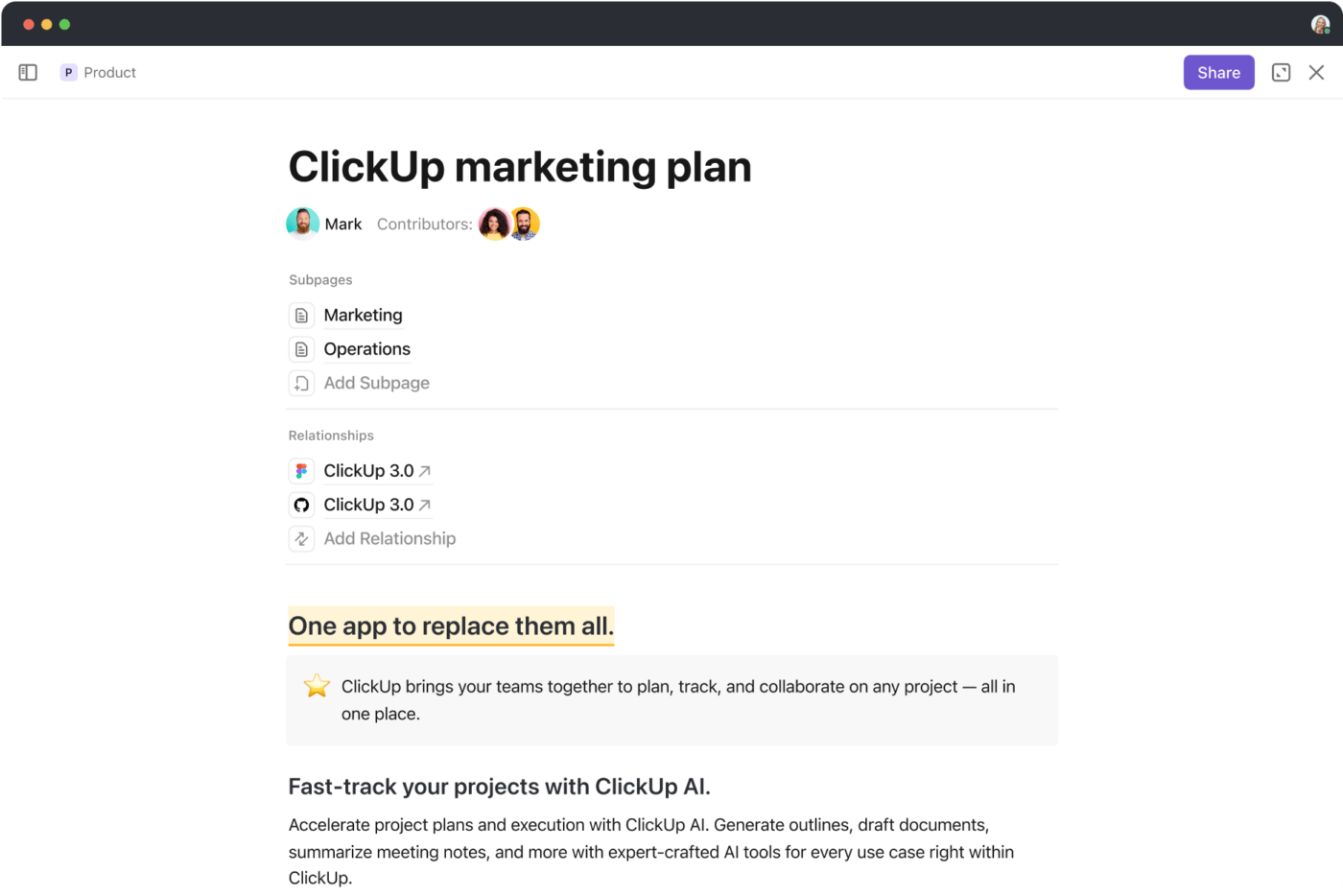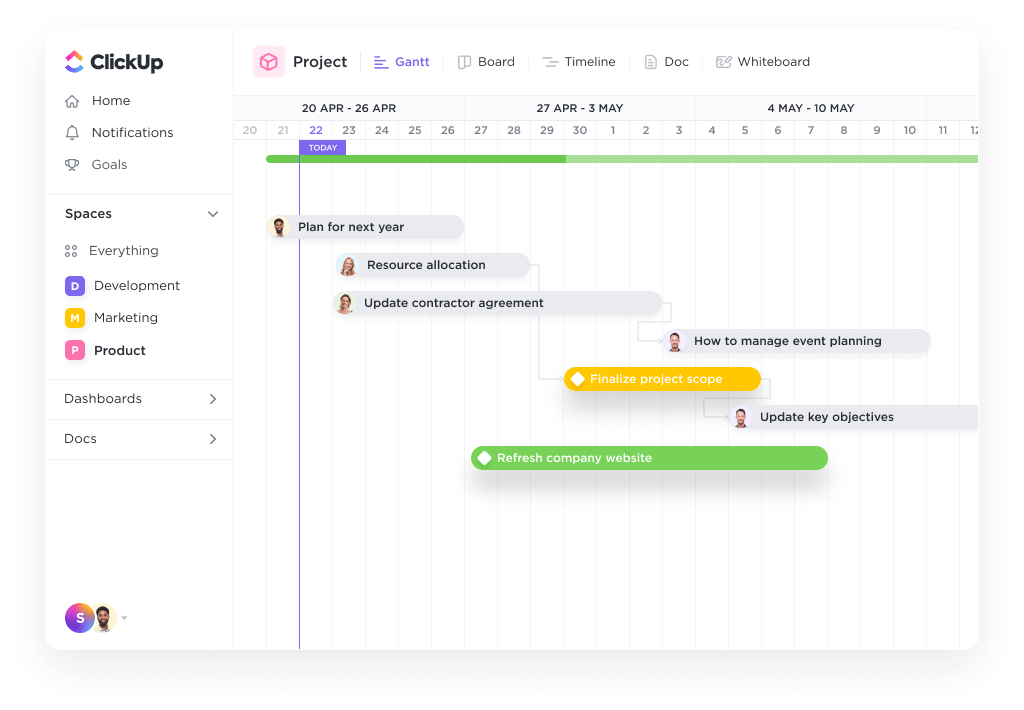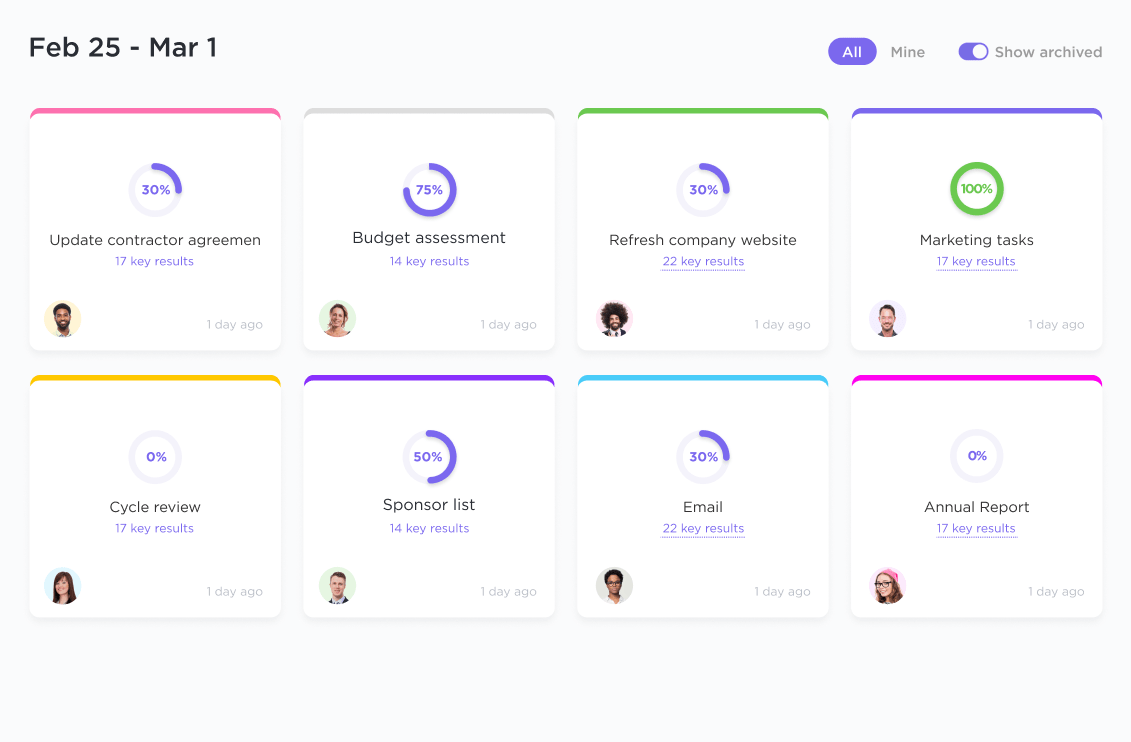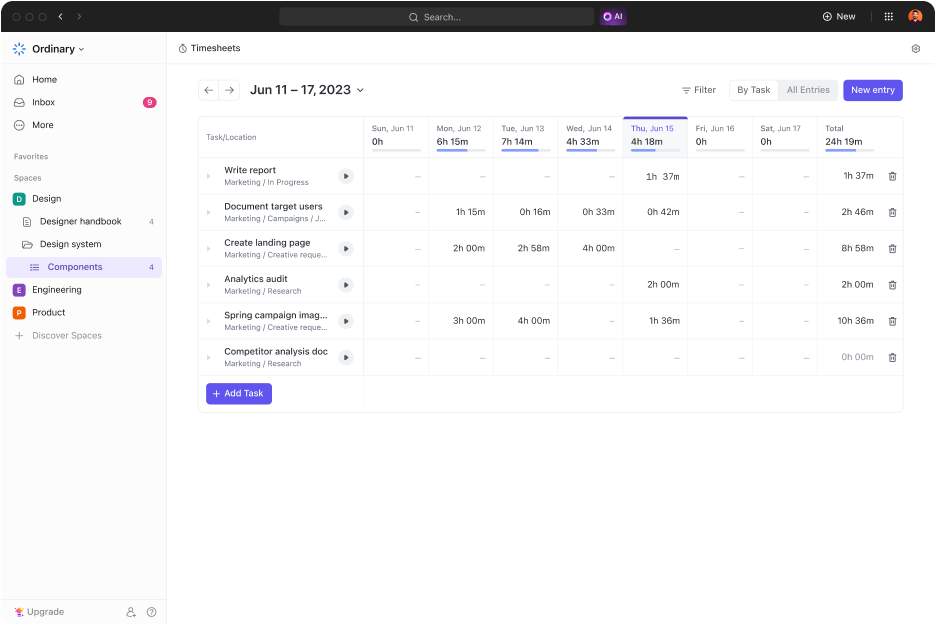How to Identify Critical Success Factors in Project Management

Sorry, there were no results found for “”
Sorry, there were no results found for “”
Sorry, there were no results found for “”
To measure the success of a project, stakeholders use a toolkit.
The tools may vary depending on the type of project, but the toolkit is broadly known as “critical success factors (CSFs).”
Picture yourself in charge of an e-commerce app project. After discussions with stakeholders and your team, you’ve established three main goals: ensuring the app is user-friendly, can handle heavy traffic, and is compatible with various operating systems.
By meeting these criteria, you’ll create a functional e-commerce app that can boost user engagement and meet business objectives. These factors, known as ‘critical success factors,’ are important in determining the project’s success.
In this blog, we delve into the significance of critical success factors and explain the different types of factors and how to pinpoint them.
A critical success factor refers to an essential element or condition that a project management team must focus on—to ensure that a project is completed successfully and on time.
Multiple critical success factors can influence a project’s outcome. Common critical success factors include well-defined goals, optimal resource allocation, realistic project plans, and a robust risk management strategy.
CSFs can vary according to the type and outcomes of a project.
Critical success factors in a project help teams focus on outcomes that truly matter.
Here are some important reasons for analyzing critical success factors in your project planning and management.
Understanding why critical success factors are important is just one part of the equation. To leverage these benefits, you need to dive deeper and understand the role of each factor and the pivotal role they play in successful project management.
Defining clear goals and objectives for a project gives you a roadmap on what needs to be achieved and how. They are essential for prioritizing your tasks and allocating resources effectively.
Aside from this, clear goals and objectives also play a role in the following ways:
Pro Tip💡: Use project management KPIs such as cost performance index, cost variance, planned value, and others to closely manage your paid resources and ensure you do not overshoot your allocated budget.
Key performance indicators, or KPIs, are metrics that determine the success of a project. Tracking KPIs can help project managers monitor the progress of a project and identify areas for improvement. It indicates the performance of individuals and teams in achieving outcomes assigned to them.
Project managers use KPIs to prepare detailed reports that give stakeholders visibility into a project’s offer stakeholders visibility into a project’s different milestones and current status. This is important for making timely course corrections and learning more about successful strategies.
The ClickUp KPI Template is a nifty tool for tracking your team’s success metrics. Add custom statuses, views, and fields to contextualize the defined KPIs and how they contribute to the project’s success. The template is an easy way to analyze team data and make performance improvements wherever necessary.
Strategic management provides a comprehensive framework for defining critical success factors for any project. It ensures that projects are focused on initiatives that align with an organization’s strategic objectives.
Let’s take an example to understand better.
SWOT analysis is a technique often used in strategic planning. It helps organizations understand how to capitalize on their strengths, identify weaknesses, mitigate risks, and leverage available opportunities.
Example of SWOT analysis in project management:
If you’re a mid-sized technology company aiming to grow your software development market share. SWOT analysis reveals the following:
Based on the SWOT analysis results, the company identifies the following as critical success factors important in growing its market share:
This is a good illustration of how strategic management principles can help identify key success factors.
Risks are uncertain events that can negatively impact a project.
While some uncertainty is inevitable, risk management allows stakeholders and project managers to predict potential risks and prepare a strategy in advance, making it a critical success factor.
By proactively identifying problems, you can ensure business operations continue even during unexpected situations. Depending on specific requirements, it could even be as simple as planning sickness covers for key contributors on your team.
Risk management also aids in cost management. By predicting risks in advance, businesses can safeguard themselves against potential losses and allocate resources effectively to manage emergency situations.
There’s no one-size-fits-all solution when it comes to CSFs. What worked for a customer success project may not work for a sales team project.
To tackle this, you need to identify specific factors that influence your project’s success or failure and know how to work with them. Here’s a structured approach to identifying the critical success factors for a project.
Goals clarify how a project should progress. They highlight specific outcomes and timeframes within which they should be achieved.
This helps derive critical success factors that can help achieve these outcomes.
Let’s say a project goal is to develop and launch a grocery delivery application that can improve online revenue by 30%.
A critical success factor in this scenario would be to ensure the application has a seamless user experience. A poor UX could increase the likelihood of visitors dropping off too early.
Goal setting is an effective way to set clear, measurable directives for a project. Once these directives are established, you can determine which activities and strategies are essential to achieve them. These activities contribute to the critical success factors.
Aside from this, goal setting indicates the end targets for a project and understanding the potential risks involved. This helps project teams prepare risk mitigation strategies and focus their efforts on optimally achieving the end targets for a project.
Pro Tip💡: Use goal-setting templates to get a detailed framework to help you set specific, realistic, and measurable goals without having to set up processes from scratch.
List down all the possible stakeholders in the project. Schedule meetings and workshops with all stakeholders to get their insights, interests, and expectations from the project.
If stakeholders work globally, using a tool like ClickUp Whiteboards for brainstorming sessions could be a good idea. Invite team members to collaborate and share input in real time. Once you’ve finalized input, you can turn ideas into tasks and assign them to the appropriate owners.

Gathering information from stakeholders can help you understand diverse perspectives and strategic priorities. This can help you identify critical success factors from various viewpoints.
Pro Tip💡: To collect broader insights, use ClickUp Forms to create forms to capture stakeholder input. The data from these surveys will be automatically organized to help you analyze the feedback.

Look at reports from previous projects. Try to make note of everything that worked and see if you can find patterns or trends across different projects that you can emulate. Analyze the KPIs in these projects and see which ones were common for successful projects.
You can even initiate conversations with the project managers and team members involved in these projects to understand what factors they thought were critical success criteria.
Pro Tip💡: Leverage project evaluation techniques to develop a data collection plan to help you effectively collect quantitative and qualitative information about successful projects.
Key deliverables are the measurable outcomes that a project must produce at different stages throughout its lifecycle.
Take the example of the grocery delivery application from before. A key deliverable for the design team in the project would be to develop a prototype of the user interface for the application within the first month.
Key deliverables indicate precisely what a project should be able to achieve. This helps team members pinpoint the factors needed to achieve these deliverables.
Pro Tip💡: Use project scope templates to document all the information related to the project, like budget, timelines, roles and responsibilities, etc. Having a clearly defined project scope eliminates the possibility of scope creep and helps your project team function more efficiently.
Critical activities are specific tasks that must be completed to achieve project outcomes. Teams can focus their efforts and resources on managing these activities closely to complete key deliverables without delay.
Determining critical activities also helps teams identify potential risks and prepare mitigation strategies ahead of time to stay prepared.
If your project deliverables are complex, use the work breakdown structure to break it down into smaller tasks. The ClickUp Work Breakdown Structure Template is the perfect way to simplify complex projects. Instead of creating processes from scratch, the template offers pre-defined fields to record important information. All you have to do is plug in the information to get started.
Once you’ve determined critical activities, use the ClickUp List View to create different categories. With ClickUp Tasks, you can create tasks under each activity and assign them to the appropriate team member with due dates. This way, team members can keep track of their tasks to ensure the project is finished on time.

Read More: How to Create A Project Plan in 5 Steps
After identifying the critical success factors, consolidate them into a shared document. This way, everyone working on the project, including all the stakeholders, knows exactly what to expect and when.
Use ClickUp Docs to create perfectly formatted documents to capture important project information. Share them with your team members and tag people to get their feedback. Any changes made to the document will be updated in real time. This way, everyone can access the latest information and be on the same page if any changes are made to the project scope or deliverables.

Everyone working on the project, including stakeholders, needs to be aligned when it comes to project scope and deliverables.
It is important to have open and transparent communication protocols to facilitate communication, encourage collaboration, gather feedback, and share insights. Here are some best practices you can implement for effective communication

Critical success factors can be classified into various types based on different projects and their contexts. Here are some of the most common types.
These critical success factors are industry-specific and depend heavily on challenges, regulations, and dynamics of different industries, such as healthcare, manufacturing, education, and automobiles.
Examples
Strategic critical success factors are commonly used by organizations to achieve business objectives and long-term growth. Different types of strategic critical success factors can be applied to a company’s different functional objectives, such as customer service, market positioning, product development, operational efficiency, and financial performance.
Example
Factors that are external to an organization but still significantly impact the success of a project are referred to as environmental critical success factors. These factors can be economic, political, social, ecological, or technological.
Example
Temporal critical success factors are time-sensitive. They are essential for timely project completion and meeting important deadlines. These factors can change according to seasonal demands, events, holidays, or government regulations within certain periods.
Example
These critical success factors vary according to the different roles and responsibilities of members in an organization. A CEO’s critical success factor will look very different from those of a management executive.
Example
ClickUp’s project management software is a versatile tool offering a wide range of features that can be used for effective project management.
Here’s a brief look at how you can leverage ClickUp for managing critical success factors.
Set comprehensive goals for your projects using ClickUp Goals. Assign clear deadlines and set targets to monitor the progress of project goals.
Using ClickUp, you can set different types of goals—numerical, monetary, true/false, or task targets. This is instrumental in tracking your critical success factors.
For instance, say your goal is to increase your sales revenue by 15% in the coming fiscal year
Your critical success factors would be:

You can use the ClickUp Progress Rollups to track the completion of these factors and determine your progress toward achieving your sales goal.
ClickUp can be used to design a workflow for your risk management strategy.
If you need a more streamlined way to plan your risk management strategy, the ClickUp Risk Assessment Whiteboard Template is a simple but functional tool to help you stay on top of potential risks. Document potential risks and assess their likelihood using a rating system. Prioritize risks according to their risk rating and take proactive measures as needed.
Need to track your team’s KPIs and monitor their performance?
The ClickUp Weekly Progress Template is a feature-rich tool that can measure the progress of your team and track what tasks have been accomplished every week.
You can set objectives for each team member and analyze how they progress toward their goals. If you find any gaps in progress, add comments and tag the relevant team member to leave your feedback on their work.
The template allows you to add due dates for each task, so you’re never behind in your progress. It offers a simple and easy way to unlock your team’s full potential.
ClickUp also offers various other features that can help you as a project manager to ensure the overall success of your project.


Identifying critical success factors is one of the most important steps in project management. It plays an essential role in ensuring the project is successful. They can help you prepare for potential pitfalls and ensure the project is completed smoothly.
Developing a detailed understanding of critical success factors can help project managers allocate resources effectively to align the project goals with the overarching objectives of your business.
If you’re looking for a way to streamline the process, using project management tools like ClickUp is a great idea. The all-in-one project management platform acts as a command center for managing all your project-related activities. With efficient task management, collaboration, documentation, and several other functionalities, ClickUp has everything you’ll need to transform your project from a plan to success.
Sign up for free and learn how ClickUp can help you identify critical success factors and set up a seamless project management workflow.
© 2025 ClickUp